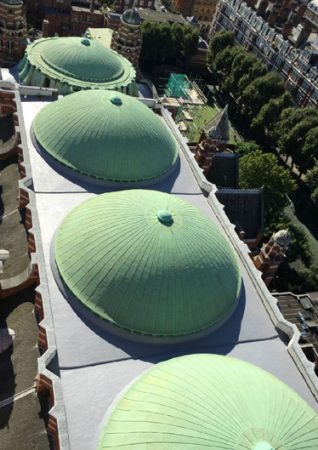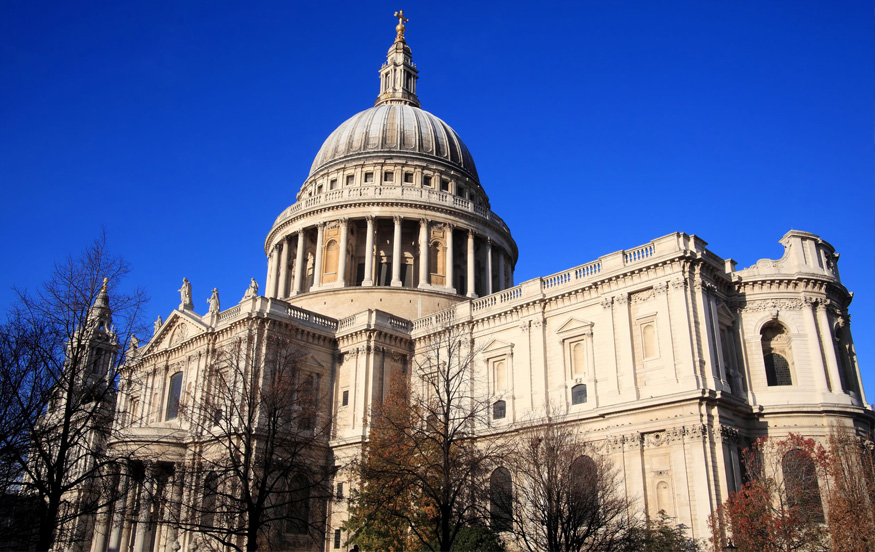For many years mastic asphalt has proven particularly popular for roof refurbishment works on heritage projects. Clients in this sector, such as architects, surveyors and other specifiers, can also benefit from MAC’s comprehensive technical information service, which provides advice on the design of all types of mastic asphalt installation.
Mastic asphalt is one of the few construction activities still regarded as a ‘craft trade’ and there are many time-served mastic asphalt roofing applicators working across the country. The skilled work involves ensuring that asphalt is at the correct temperature, and then spreading it using traditional techniques to coat the surface. A thermoplastic material that changes shape when heated, mastic asphalt cures to form a hard, durable, finished product to suit all applications of mastic asphalt.
As mastic asphalt is laid in molten form, it is often confused with other types of waterproofing membrane that require naked flame or torch on application. In reality, there is no naked flame at the point of installation and because mastic asphalt is so highly flame resistant, there is little or no potential of fire risk.
Back in 2008, the Mastic Asphalt Council made history as the first industry in the world to achieve the CarbonZero standard. Since then mastic asphalt has offset thousands of tonnes of carbon dioxide – underlining its status as a green waterproofing material.
Although mastic asphalt is typically known for its durability, it is increasingly being specified for heritage roofing projects where green credentials are taken into consideration. When mastic asphalt has reached the end of its useful life, it can be recycled or used as roof screed. The Building Research Establishment (BRE) has officially stated that asphalt roofing is capable of lasting 50-60 years, but MAC has many examples well in excess of this. For instance, mastic asphalt was first laid at London’s St Paul’s Cathedral in 1906 and it provided well over 100 years’ of effective waterproofing before it needed replacement.
 The heritage market is a key sector for the industry and mastic asphalt is frequently specified for roofing projects by the National Trust and English Heritage, as well as other public and private owners of prestigious buildings in this sector. For example, Buckingham Palace is testament to the longevity of mastic asphalt. On top of the Royal household is a rooftop of mastic asphalt that has kept the building dry for well over 80 years. Other heritage applications include the Tower of London, Tower Bridge, Westminster Cathedral and Edinburgh Castle.
The heritage market is a key sector for the industry and mastic asphalt is frequently specified for roofing projects by the National Trust and English Heritage, as well as other public and private owners of prestigious buildings in this sector. For example, Buckingham Palace is testament to the longevity of mastic asphalt. On top of the Royal household is a rooftop of mastic asphalt that has kept the building dry for well over 80 years. Other heritage applications include the Tower of London, Tower Bridge, Westminster Cathedral and Edinburgh Castle.
MAC contractor member Sussex Asphalte featured in the National Federation of Roofing Contractors (NFRC) Guidance Note 33 on Zero Avoidable Waste in Construction which references the company’s refurbishment project at St Paul’s Cathedral.
St Paul’s Cathedral, with its world famous dome, is an iconic feature of the London skyline. The largest Cathedral in England, it is the masterpiece of Britain’s most famous architect Sir Christopher Wren. Mastic asphalt was first laid in 1906 on the Stone Gallery that circles the Cathedral dome and it provided a remarkable 111 years’ weatherproof protection before it required refurbishment by Sussex Asphalte.
When the mastic asphalt on the Stone Gallery was renewed in 2017, approximately 20 tonnes of the original mastic asphalt was saved and stored on-site to allow it to be re-used again in the future. Just nine months later it was re-melted, sieved and used again by Sussex Asphalte for a further mastic asphalt waterproofing project at St Paul’s Cathedral – this time on the North Courtyard. In addition, the underlying workshops and storage facilities were affected by water ingress, so mastic asphalt was once again specified to waterproof the 500m2 area.
This article featured within the June 2022 edition of RCi Magazine – click here to view the article.

